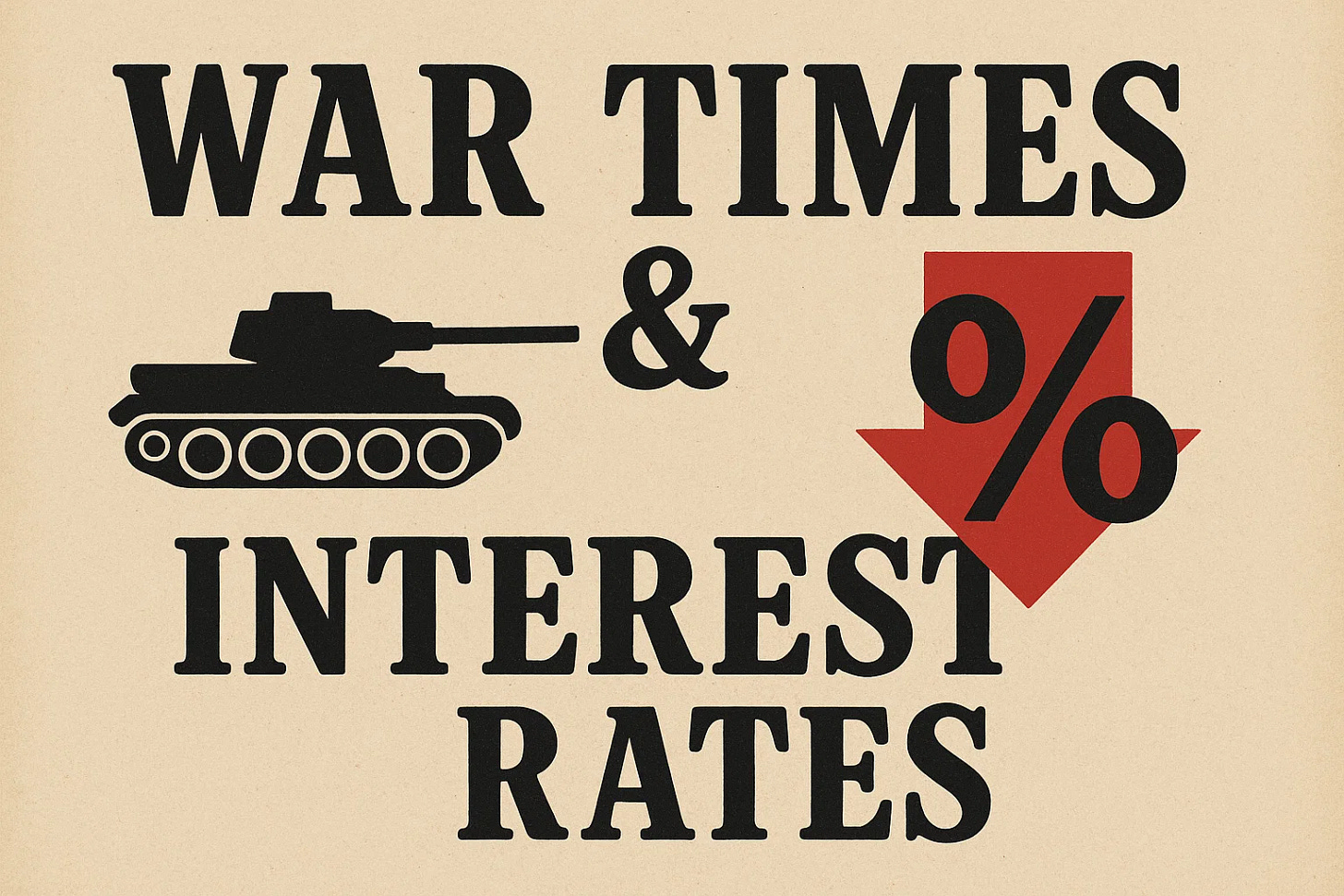The relationship between war and interest rates is anything but linear. It’s shaped by fear, funding, inflation, and central bank reaction — and it changes over time.
Here’s the market-tested rhythm we often see when the world enters conflict:
Short-Term: Flight to Safety
At the onset of war, markets panic.
Risk-off sentiment kicks in. Investors ditch equities and risky assets, piling into “safe havens” — like U.S. Treasuries.
Result? Bond prices rise. Yields (interest rates) fall.
This is classic flight to safety behavior.
Meanwhile, central banks usually step in to steady the ship:
Inject liquidity
Hold or lower interest rates
Smooth over volatility
Especially when governments need to borrow more (cheaply.)
Long-Term: Inflation & Debt Take Over
Wars aren’t cheap. Once the dust settles on the initial shock, the deeper economic effects kick in:
Wartime Spending = Inflation Fuel
Governments ramp up spending on weapons, logistics, personnel.
Supply chains are disrupted.
Scarcity rises. Demand stays same
Demand relatively higher due to supply chain disruption
Result? Inflation rises. Central banks raise rates.
Debt Loads Climb
Wars are funded with debt. More government bonds flood the market.
Eventually, to attract buyers, governments must offer higher interest rates.
Bond prices drop → Yields rise
Policy Shifts Mid-War
What begins as emergency stabilization (low rates) morphs into an inflation-fighting stance (rate hikes, tighter money). This transition is often painful, leading to "harder landings" and potentially a recession.
History Speaks
WWI & WWII: Governments kept rates artificially low to fund the war — but inflation ran hot, leading to post-war rate surges.
Just like COVID-19 (not a war, but a disaster)
Recent Conflicts: The immediate market response is muted in rate terms, but longer-term inflationary impacts still show up — especially when wars intersect with supply shocks (think oil, commodities, shipping).
Bottom Line
“War starts with fear and ends with inflation.” - Uday C. S
While the short-term reaction often sees interest rates dip, the longer-term effect is usually upward pressure — driven by debt, supply constraints, and inflation.
Smart traders look beyond CNBC headlines.
They track the shift from liquidity support → inflation defense. That’s when the true rate moves begin.


